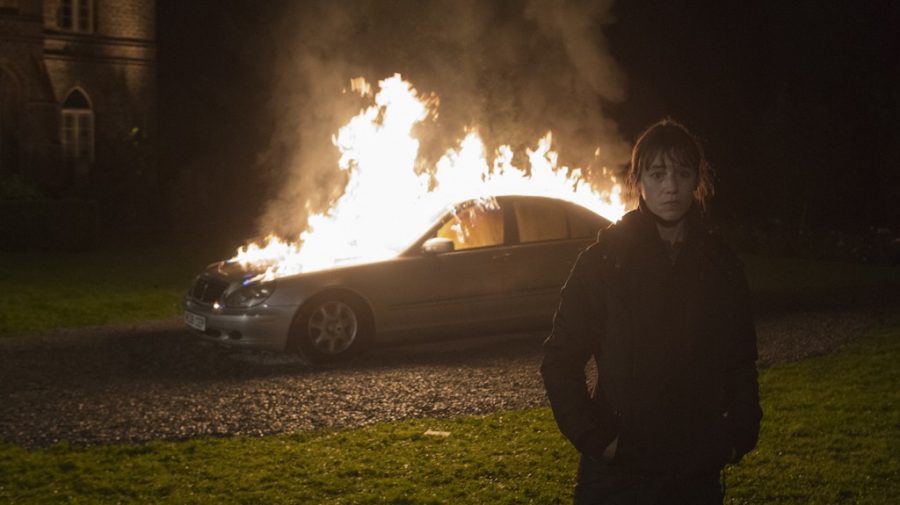
 It is easy, because of the split release schedule, to approach “Nymphomaniac” as two separate films, critiquing them on their individual merits. Giving way to this temptation makes it even easier to write off “Volume 2” as the inferior and more problematic counterpart to “Volume 1.” “Volume 2,” despite a few moments of narrative excess, is slower and less visually pleasing. The reason that judging the films separately is incorrect is because it defies the logic of the complete narrative. The films make up one story. They are reliant of each other for completion; they are inseparable. Once you have viewed both, you understand that you have only viewed a single film.
It is easy, because of the split release schedule, to approach “Nymphomaniac” as two separate films, critiquing them on their individual merits. Giving way to this temptation makes it even easier to write off “Volume 2” as the inferior and more problematic counterpart to “Volume 1.” “Volume 2,” despite a few moments of narrative excess, is slower and less visually pleasing. The reason that judging the films separately is incorrect is because it defies the logic of the complete narrative. The films make up one story. They are reliant of each other for completion; they are inseparable. Once you have viewed both, you understand that you have only viewed a single film.
Of the first film, I said that it “is a racy, provocative, and challenging exploration of one women’s complex journey through sexual discovery.” Upon reflection, now that I have experienced “Nymphomaniac” in a full-form (the longer and uncut version still yet be released), I can say that my opinion has only slightly changed. “Volume 2” could be critiqued for taking less formal risks. The film is more straightforward. However, through the scope of the entire film, which grants each chapter its own voice and style, “Volume 2” is not a departure. In the strongest chapter of “Volume 2,” entitled “The Gun,” Von Trier enhances the emotion of the plot through manipulation of the film noise. The sequence is shot in a manner that makes the film’s grain (noise) inescapably present. The sequences’ tension is ever-present through this technique. This, like “The Mrs. H” sequence in “Volume 1,” is an example of how the film is operating on a visual level that cannot be ignored. It is through these technical experiments, through Von Trier’s visual nature, that “Nymphomaniac” is most appealing.
The film’s fate will rest on its received message, which at best is convoluted. I have seen accusations abound claiming it to be riddled with sexism. On the other hand, there are many that claim the film exists to undermine sexist attitudes that are prevalent today. The layers that exist within the film make it extremely difficult to comprehend a single message of either nature. It seems impossible to deny that Von Trier is more interested in the scenes involving sadomasochism, than any of the sex scenes. Is this proof that implicating women with sexual violence excites Von Trier? The film’s presentation of numerous conflicting sexual perversions makes this assessment feel incorrect, but that being said, I do find it hard to view the film as revolutionary. Ultimately, I think the filmed is ideologically flawed; unsure of it’s own motivation. The only thing that is clear is that Von Trier is manipulating his audience: taking it at face value is the only mistake that you can make.
The film is perhaps more complicated than the detractors believe, as well as less complicated that some of its fanatics would like to think. It is a film that should be seen and reflected on. A single viewing is not adequate for full reflection. Only time will reveal the fate of the film; whether it will rise in importance, or fall into obscurity. With the release of “Volume 2”, Lars Von Trier’s message (although as I have argued the film does not have a cohesive and singular one) is complete, but what is his message? Well, you’ll have to see for yourself.